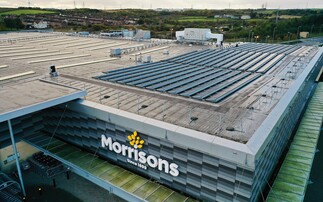All businesses have a role to play in delivering SDG9, but what steps should they take to aid the development of more sustainable industries
Creating an effective strategy to meet SDG9 has come similarities to playing Sims: it's an opportunity to imagine an entirely new world. Here are some top tips for how businesses can help realise the UN's vision for sustainable infastructure and industrialisation.
Collaborate with other businesses
Be prepared to make connections with other businesses in your industry. There are two good reasons for seeking co-operation: it increases your impact, while making sure that competitors don't get ahead. Shared approaches could involve adopting voluntary standards, embracing common metrics to track performance, sharing best practice, or using combined buying power to influence decisions further down the supply chain.
For example, the cargo industry is already making use of the opportunities offered by industry collaboration. Some 80 per cent of global container cargo capacity is represented by BSR's Clean Cargo initiative, uniting around 50 businesses including Kuehne + Nagel, Signify and Electrolux.
"Partnerships along the value chain are key to truly conducting business sustainably," says Nicola Kimm, head of sustainability, environment, health & safety at Signify. "Clean Cargo is a group of peers dedicated to accelerating sustainability in the container shipping industry. Furthermore, we gain access to reliable and accurate data on individual carrier performance, enabling us to make better informed procurement decisions and drive down carbon emissions of our logistics."
Engage with policymakers
Building a sustainable future will require some truly systemic changes throughout business and industry. While some of these changes can be instigated from within the board room, others will require larger shifts that are beyond the capacity of any one company. This is when it becomes important to engage with the people writing our laws and policies.
The cement industry, for instance, is the second largest industrial emitter of greenhouse gases after the steel industry. Demand is expected to grow by up to 23 per cent by 2050 as populations rise, so the extent to which the sector can be decarbonised will be crucial to the success of SDG9. While research has shown that cement industry emissions can by reduced by 80 per cent by 2050 with existing technology alone, there's only so much that companies can do alone. In other words, government support is vital.
"To help cement companies unlock further potential, government policies that encourage and facilitate the increased use of alternative fuels and alternative raw materials, would drive and further enable the reduction of the clinker-to-cement ratio," writes Jennifer Gerholdt, director of corporate engagement at the We Mean Business coalition. "Similarly, public procurement policies for infrastructure projects usually require non-blended cement (ordinary Portland cement). But removing such a requirement could increase demand for lower-carbon blended cements, giving companies the long-term signals they need to develop and expand these product ranges further."
Understand your supply chain
For businesses wanting to measure their success against SDG9's indicators, it is important to understand your baselines not only on home territory but throughout the supply chain. "Most companies have a pretty good handle on their core operations in terms of energy and water and so on, and basic infrastructure and where they need to make capital investments, but have focused a lot less on their supply chain and where those needs exist," says Sue Reid, president of climate and energy at sustainable investor group Ceres.
But monitoring supply chain performance is crucial for bolstering competitiveness and resilience, especially when you consider the cascading impacts of climate change and the disruptive effect that events such as drought and flood can have both on the production of goods and the predictability with which they are delivered. Mars Inc is one example of a company that has taken these risks on board. The chocolate company has funded even research into the impacts on droughts on cocoa yields, and has mapped around a quarter of its supply chain using GPS in its efforts to eliminate deforestation in areas where it works by 2025.
Work with nature
Infrastructure and industry no longer needs to be seen in terms of concrete and steel. "Green" infrastructure - such as forests, wetlands and mangroves - can complement grey infrastructure to meet the needs of various industries, including critical sectors such as water and power utilities. Integrating nature into mainstream services can both lower costs and build resilience, due to its ability to naturally regenerate following an extreme event, as well as help to restore ecosystems and preserve biodiversity.
In March, the World Bank Group and the World Resources Institute joined forces to produce a report on how to bring nature into the next generation of infrastructure, including a framework to evaluate green infrastructure from a technical, social, environmental and economic perspective.
"The financial case for considering green infrastructure has been well-documented in areas such as reducing the cost of water-related service provision, but varies depending on local conditions," write the authors in the executive summary of the report. "Service providers and their partners should therefore conduct site-based assessments on a case-by-case basis to evaluate financial impacts."
Delivering SDG9's attempts to "build resilient infrastructure, promote inclusive and sustainable industrialization and foster innovation" will ultimately require a reimagining of how every business operates. But as companies look to shift towards more sustainable business and infrastructure models, there are plenty of important steps they can take along the way.








